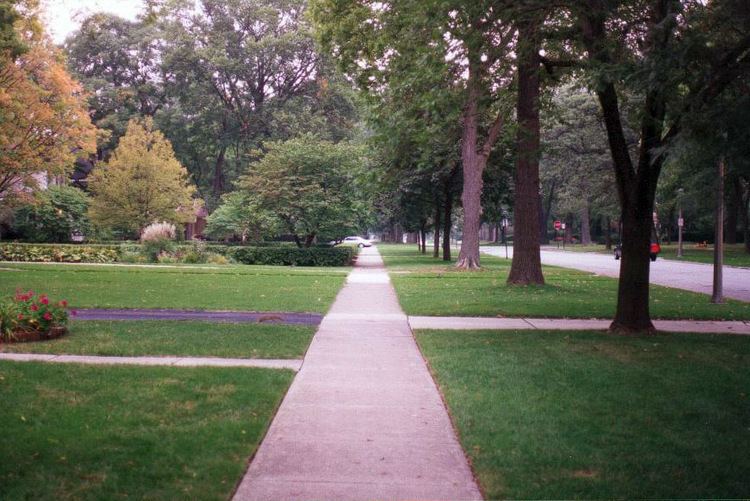 | ||
A road verge is a narrow strip of grass or plants, and sometimes also trees, located between the carriageway (roadway) curb (or road surface edge or shoulder) and the boundary of a road. Verges are known by dozens of other names, often quite regional; see Terminology, below.
Contents
The land is often public property, with maintenance usually being a municipal responsibility. Some municipal authorities, however, require that abutting property owners maintain their respective verge areas, as well as the adjunct footpaths or sidewalks.
Benefits include visual aesthetics, increased safety and comfort of sidewalk users, protection from spray from passing vehicles, and a space for benches, bus shelters, street lights, and other public amenities. Verges are also often part of sustainability for water conservation or the management of urban runoff and water pollution and can provide useful wildlife habitat. Snow that has been ploughed off the street in colder climates often is stored in the area of the verge by default.
In some countries, verges are the last location of habitats for a range of flora.
The main disadvantage of a road verge is that the right-of-way must be wider, increasing the cost of the road. In some localities, a wider verge offers opportunity for later road widening, should the traffic usage of a road demand this. For this reason, footpaths are usually sited a significant distance from the curb.
Terminology
This term verge has many synonyms and dialectal differences. Some dialects and idiolects lack a specific term for this area, instead using a circumlocution.
Terms used include:
Sustainable urban and landscape design
In urban and suburban areas, urban runoff from private and civic properties can be guided by grading and bioswales for rainwater harvesting collection and bioretention within the "tree-lawn" - parkway zone in rain gardens. This is done for reducing runoff of rain and domestic water: for their carrying waterborne pollution off-site into storm drains and sewer systems; and for the groundwater recharge of aquifers.
In some cities, such as Santa Monica, California, city code mandates specify:
Parkways, the area between the outside edge of the sidewalk and the inside edge of the curb which are a component of the Public Right of Way (PROW) - that the landscaping should require little or no irrigation and the area produce no runoff.
For Santa Monica, another reason for this use of "tree-lawns" is to reduce current beach and Santa Monica Bay ocean pollution that is measurably higher at city outfalls. New construction and remodeling projects needing building permits require that landscape design submittals include garden design plans showing the means of compliance.
In some cities and counties, such as Portland, Oregon, street and highway departments are regrading and planting rain gardens in road verges to reduce boulevard and highway runoff. This practice can be useful in areas with either independent Storm sewers or combined storm and sanitary sewers, reducing the frequency of pollution, treatment costs, and released overflows of untreated sewage into rivers and oceans during rainstorms.
Rural roadsides
In some countries, the road verge can be a corridor of vegetation that remains after adjacent land has been cleared. Considerable effort in supporting conservation of the remnant vegetation is prevalent in Australia - where significant tracts of land are managed as part of the roadside conservation strategies by government agencies
